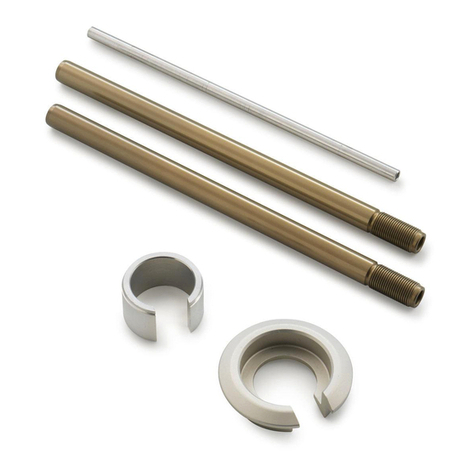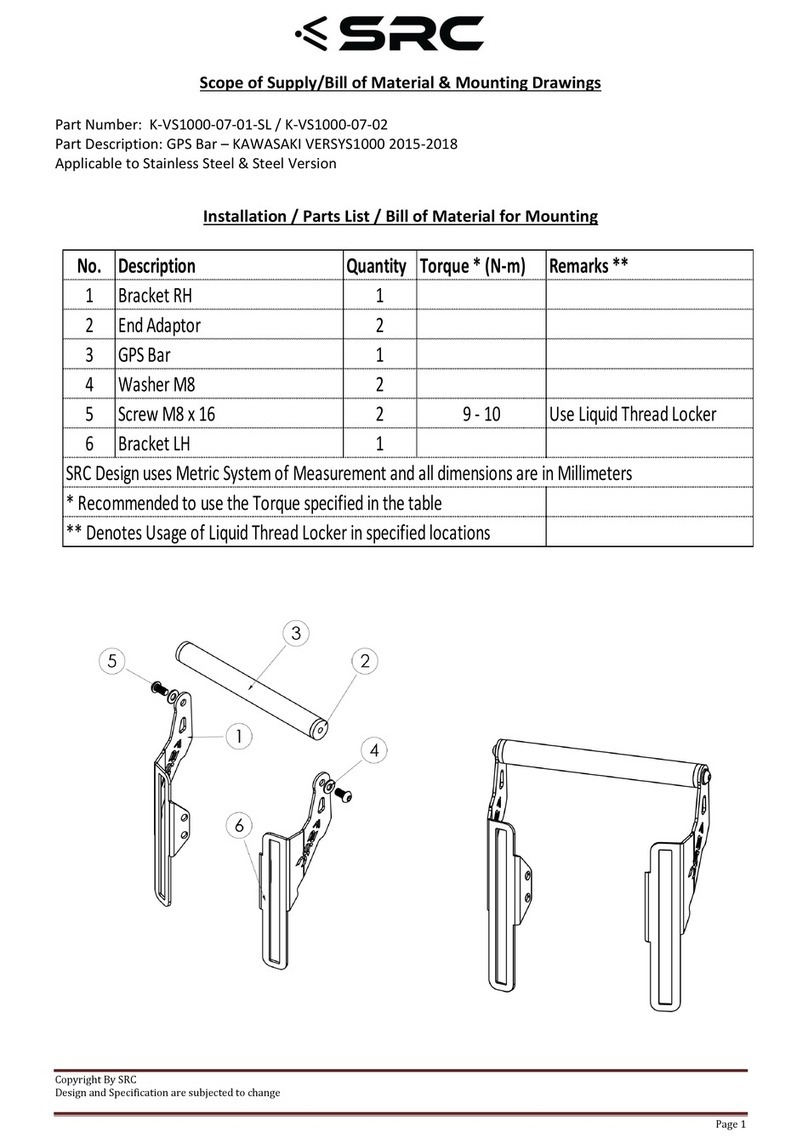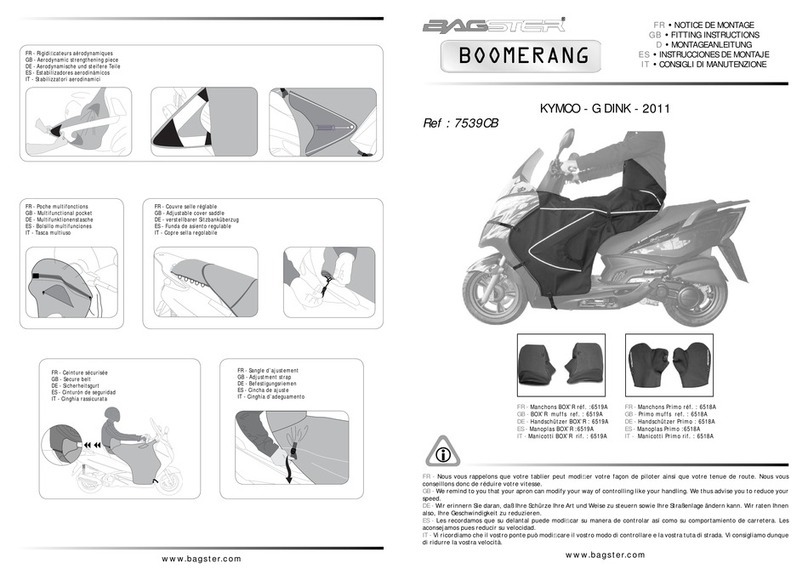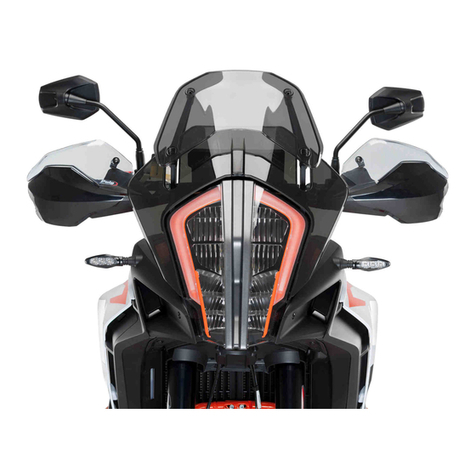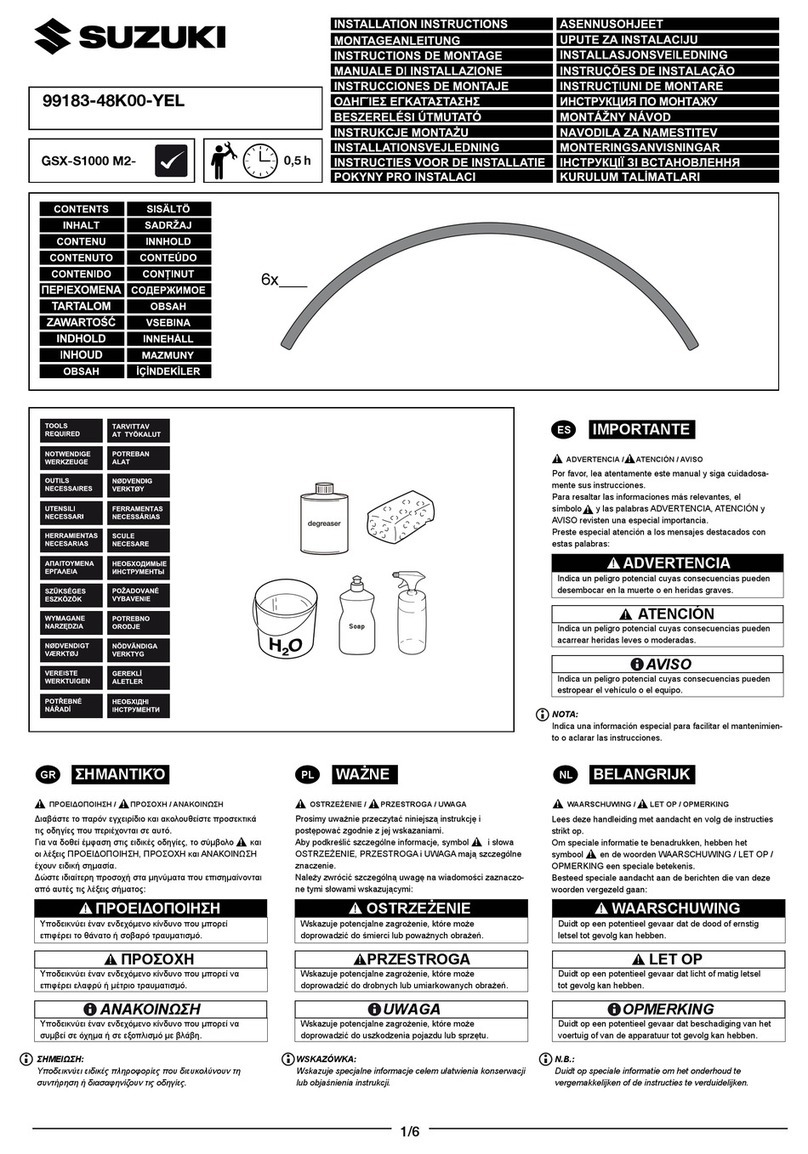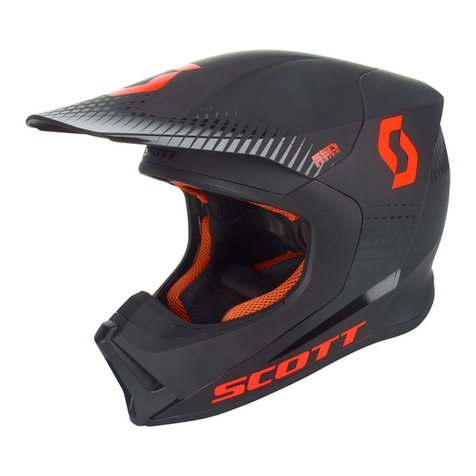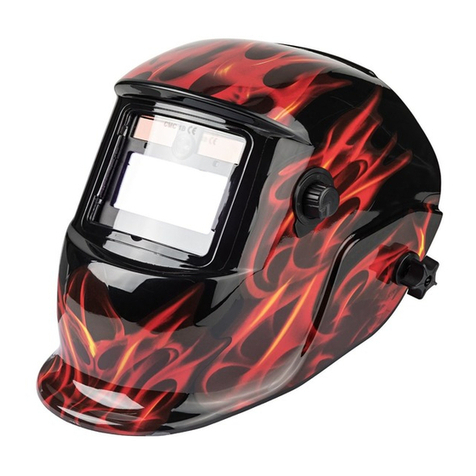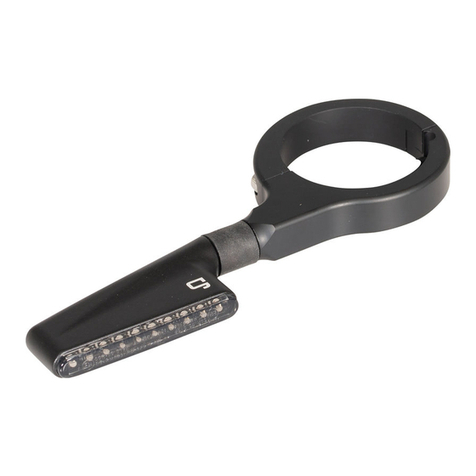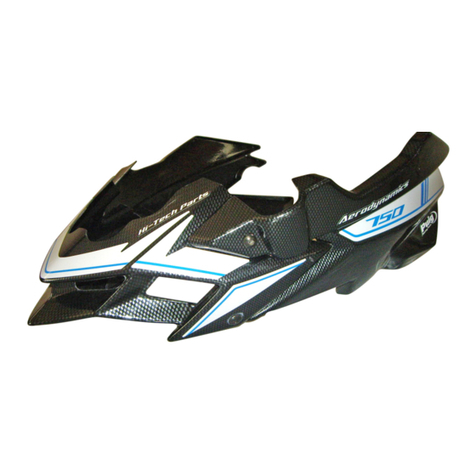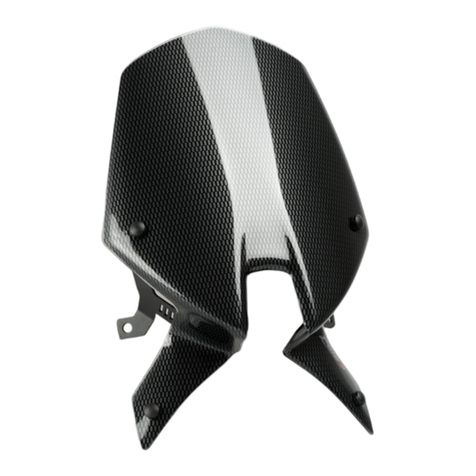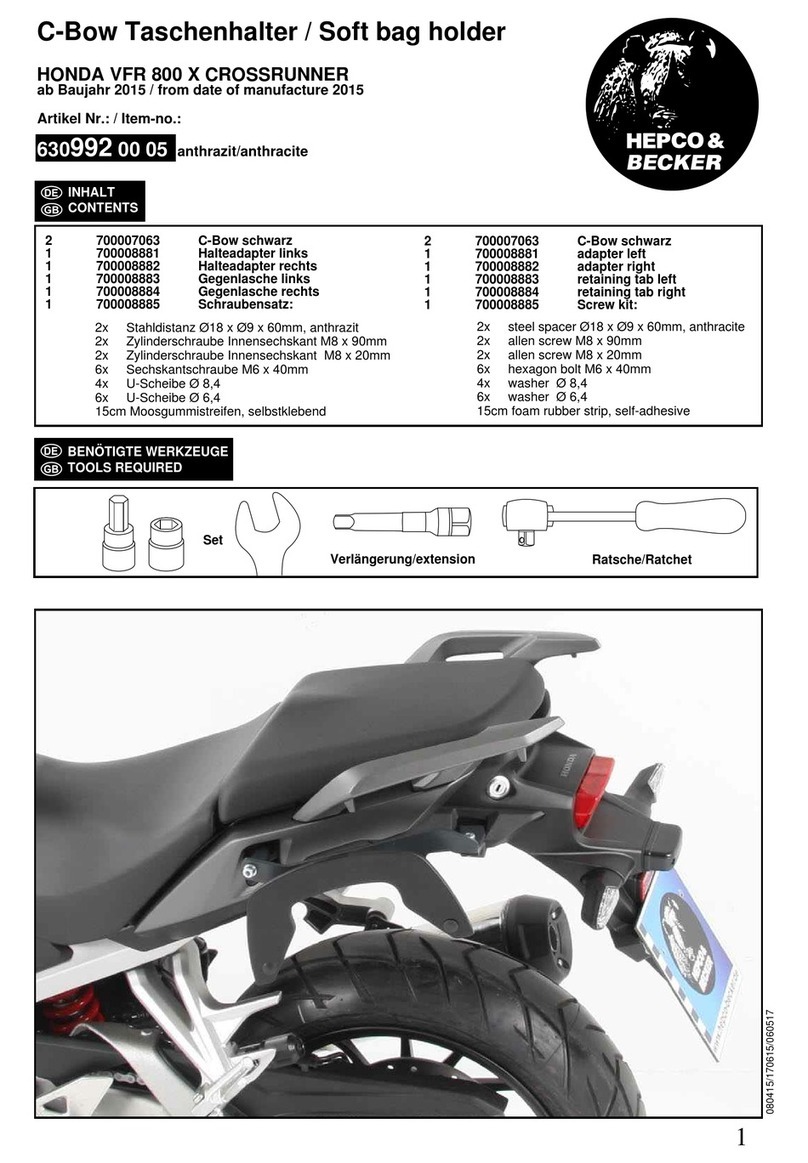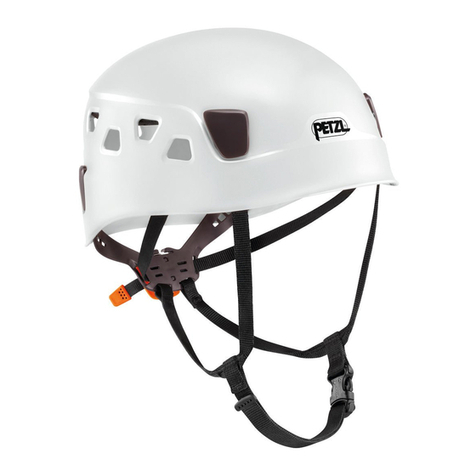Skitrab AERO User manual

SKITRAB.com
Compliant with new
European Regulation
(EU) 2016/425
AERO HELMET
STANDARDS
EN 1077:2007/B
EN 12492:2012

Notified body intervening for the EU type
examination:
Ente Notificato che ha svolto l’esame UE del tipo:
Benannte Stelle, die die EU-Musterprüfung
durchgeführt hat:
Organisme notifié qui a effectué l’examen de l’UE du
type:
Certifikovaná zkušebna která ručí za typovou
zkoušku EU:
Firmaet som har utført tester i henhold til EUs
regelverk:
Dolomiticert Scarl
(N.B. 2008),
Z.I. Villanova/7a, Longarone (BL) - IT

CASCO AERO
ATTENZIONE: Per la vostra sicurezza leggete
attentamente le seguenti istruzioni prima di
utilizzare il dispositivo!
Il presente casco è un dispositivo di protezione
individuale (DPI) di II categoria ed è stato
studiato e fabbricato in conformità al
Regolamento UE 2016/425 ed alle norme
tecniche armonizzate per lo sci alpino e lo
snowboard (normativa EN 1077:2007/B) e per
l’alpinismo (normativa EN 12492:2012).
La dichiarazione di conformità UE è
consultabile sul sito www.skitrab.com
Il presente dpi è un casco leggero,
confortevole e studiato per proteggerti il
capo dagli urti dovuti alla caduta durante
lo svolgimento delle attività sportive
sopra indicate e/o dalla caduta di massi
(evento frequente nell’alpinismo). Un dpi
non è sinonimo di garanzia di incolumità,
pur limitando le ferite alle zone coperte, il
dispositivo non può proteggerti da ogni tipo
di impatto o incidente e non è in grado di
escludere la morte o l’invalidità permanente.
Il casco è costruito in modo tale da assorbire
l’energia di un impatto attraverso la
distruzione parziale o il danneggiamento dei
componenti dello stesso. Anche se il casco
non presenta danni evidenti/visibili dopo
un impatto (caduta e/o colpo) è necessario
sostituirlo ed eliminarlo. Si consiglia di
sostituire il dispositivo dopo 10 anni dalla data
di produzione anche se è stato poco o mai
utilizzato. La data di produzione è riportata sul
casco, la sua durata dipende da diversi fattori
inclusi sole, temperatura ed uso (usi estremi
possono ridurre drasticamente la durata). Nel
caso di dubbio sulla sicurezza del dispositivo
si raccomanda di sostituirlo. Utilizzate il casco
solo per le attività per cui è stato realizzato!
E’ vietato apportare qualsiasi modifica al casco
e aggiungere, modificare o togliere qualsiasi
componente.

COME INDOSSARE IL CASCO
Attenzione: allo scopo di garantire una
protezione adeguata il casco deve adattarsi ed
essere indossato correttamente ogni volta che
praticate attività sportiva.
Il casco deve calzare perfettamente e risultare
confortevole. In caso contrario Scegliete
un’altra taglia o un altro modello. Indossare
il casco e ruotare in senso orario la ghiera
di regolazione (vedi fig.1) per regolare la
taglia fino ad ottenere una calzata stabile e
confortevole.
Il casco deve essere calzato correttamente in
posizione orizzontale sulla testa, deve coprire
la fronte e deve permettervi un ampio campo
visivo (vedi fig.2).
Portate in posizione corretta il divider dei
cinturini di chiusura (fig.3), fate in modo che
entrambi i cinturini siano regolati in modo
uguale.
Regolare e stringere bene il cinturino per
evitare il rischio che il casco venga scalzato
dalla testa. (fig.4). Il casco, correttamente
calzato, non si deve muovere in alcuna
direzione.
Per una miglior vestibilità potete regolare
l’altezza del sistema di chiusura (A): togliete
il casco e spostate i punzoni di fermo in una
delle due posizioni della ghiera forata B (fig.5 )
e verificate.
Ogni modifica non indicata dal produttore
può pregiudicare il corretto funzionamento/
protezione del casco. In ogni caso utilizzate
esclusivamente accessori originali.Tramite gli
elastici laterali del casco è possibile fissare
una lampada frontale al casco.

1
2
3
4
5B
A
NO NO OK
NO NO OK

SIGNIFICATO DELLA
MARCATURA SUL CASCO
Logo/nome ed indirizzo del fabbricante
Model: cod.36023
Referenza del prodotto
Name: AERO: Nome del dispositivo
Size: S-M (52-56 CM): Taglia in cm del girotesta
Weight: 300 gr.: Peso del casco (arrotondato ai
50gr più vicini)
Date 09/20: Mese e anno di fabbricazione
CE: Marcatura di conformità al regolamento
europeo (UE) 2016/425 relativo ai
Dispositivi di Protezione Individuale: Dettagli
istruzioni su nota informativa allegata al casco
EN1077:2007 CLASS B:
Caschi per la pratica dello sci alpino e per lo
snowboard. I caschi di classe A e di classe B
sono per lo scialpino, snowboard e attività simili.
I caschi di classe A offrono comparativamente
più protezione. I caschi di classe B possono
offrire una maggiore ventilazione ed una migliore
capacità uditiva, ma proteggono un’area più
ridotta della testa ed offrono un minore grado di
protezione contro la penetrazione.
EN 12492:2012 - Casco per alpinisti-
1
3
2
Sticker Helmet Aero cod.36023
dimension 60mm x 20mm
Model : cod.36023
Name: AERO
Size: S-M(52-56 CM)
Weight: 300 gr.
Date 09/20
EN1077 CLASS B
HELMET FOR ALPINE SKIERS
AND SNOBOARDERS
EN 12492
HELMET FOR MOUNTAINEERS
srl
via btg.Tirano,6-23032 Bormio Italy
Made in China
5
1
2
3
4
4
5

MANUTENZIONE
Prima di ogni utilizzo Verificare sempre
lo stato del casco e delle fettucce. Se si
dovessero verificare abrasioni o anomalie
sostituite il casco!
Il casco va pulito esclusivamente con acqua e
sapone neutro, evitare manutenzione e pulizia
con sostanze che potrebbero avere effetti
dannosi sui materiali del casco.
Evitare il contatto con sostanze corrosive.
I materiali utilizzati mantengono intatte
le loro caratteristiche entro temperature
comprese tra -20° e +35°.
Conservare il casco al riparo dalla luce solare e
da fonti di calore: non lasciarlo nell’abitacolo al
sole o nelle vicinanze di fonti di calore.
Si consiglia di stoccare e traspor-tare il casco
in sacchetti/scatola in plastica/cartone di
protezione idonei (esempio la sua confezione
originale).

AERO HELMET
WARNING: For your safety please read the
following instructions carefully before using
this item!
This helmet is an item of category II personal
protective equipment (PPE) and has been
designed and manufactured in accordance
with EU regulation 2016/425 and the
harmonised technical standards for alpine
skiing and snowboarding (regulation EN
1077:2007/B) and mountaineering (regulation
EN 12492:2012).
The EU declaration of conformity can be found
at www.skitrab.com.
This article of PPE is a lightweight,
comfortable helmet designed to protect your
head from impact due to falls during the
aforementioned activities and/or rock falls
(a frequent occurrence when ski touring).
An item of PPE is not a guarantee of safety;
though it limits injuries to the covered area, it
cannot protect you from every kind of impact
or accident, and cannot exclude the possibility
of death or permanent disability. The helmet
is constructed in such a way as to absorb
the energy of an impact through the partial
destruction or damage of its components.
Even if the helmet does not show any evident/
visible signs of damage after an impact (fall or
blow) it must be substituted and destroyed. It
is highly recommended to change the article
10 years after the date of production even
if it has rarely or even never been used. The
date of production is shown on the helmet,
its durability depends on a variety of factors
including sun exposure, temperature and
use (extreme use can drastically reduce its
lifespan). In case of doubts over the safety of
the product, substitute it. Use this helmet only
for the activities for which it is designed!
It is forbidden to make any modifications to
the helmet or to add, modify or remove any of
its components.

HOW TO WEAR THE HELMET
Important: In order to guarantee adequate
protection the helmet must be adjusted and
worn correctly every time you use it.
The helmet must fit perfectly and be
comfortable. If not choose another size or
model.
Put the helmet on and turn the dial clockwise
(see fig.1) to regulate the size until you obtain
a stable, comfortable fit. The helmet must fit
correctly in a horizontal position on the head,
it should cover the forehead and allow a wide
range of vision (see fig.2).
Adjust the divider of the chin strap (fig.3),
making sure that both straps are the same
length. Regulate and tighten the strap to stop
the helmet coming off the head (fig.4). The
helmet, when fitting correctly, should not
move in any direction.
For a better fit you can regulate the height of
the closing system (A): remove the helmet and
move the pin to one of the two holes in dial B
(fig.25) and check it.
Every modification not recommended by
the manufacturer could affect the correct
performance/protection of the helmet. Always
use original accessories only.
Thanks to the fixing device on the helmet it is
possible to attach a headlamp.

1
2
3
4
5B
A
NO NO OK
NO NO OK

MEANING OF THE MARKINGS
ON THE HELMET
Logo/name and address of the
manufacturer
Model: cod.36023 - Product reference
number
Name: AERO –Name of product
Size: S-M (52-56 CM): - Size in cm of the
headband -
Weight: 300 g: - Weight of helmet (rounded up to
the nearest 50g)
Date 09/20: Month and year of production
CE: mark of conformity to EU regulation
2016/425 regarding Personal Protective
Equipment:
Detailed instructions on the information sheet
attached to the helmet.
EN1077:2007 CLASS B:
Helmets for alpine skiing and snowboarding.
Class A and B helmets are for alpine skiing,
snowboarding and other similar activities. Class
A helmets offer comparatively more protection.
Class B helmets may offer more ventilation and
better hearing quality, but protect a smaller area
of the head and offer less protection against
penetration.
EN 12492:2012 – Helmet for mountaineers
1
3
2
Sticker Helmet Aero cod.36023
dimension 60mm x 20mm
Model : cod.36023
Name: AERO
Size: S-M(52-56 CM)
Weight: 300 gr.
Date 09/20
EN1077 CLASS B
HELMET FOR ALPINE SKIERS
AND SNOBOARDERS
EN 12492
HELMET FOR MOUNTAINEERS
srl
via btg.Tirano,6-23032 Bormio Italy
Made in China
5
1
2
3
4
4
5

MAINTENANCE
Before each use check the state of the helmet
and straps. If you find abrasions or anomalies
use a different helmet!
The helmet must be cleaned exclusively with
ph neutral soap and water, avoid maintenance
and cleaning with substances that could
damage the helmet materials.
Avoid contact with corrosive substances.
The materials used maintain their
characteristics at temperatures of between
-20° and +35°.
Store the helmet away from direct sunlight
and heat sources.
Store and transport the helmet in a suitable
plastic or cardboard bag/box (e.g. its original
packaging).

CASCO AERO
ACHTUNG: Zu Ihrer Sicherheit lesen Sie bitte
die folgenden Hinweise vor der Verwendung
des Gerätes!
Dieser Helm ist eine persönliche
Schutzausrüstung (PSA) der Kategorie
II und wurde in Übereinstimmung mit
der EU-Verordnung 2016/425 und den
harmonisierten technischen Normen für
alpine Skiläufer, Snowboarder (Norm EN
1077:2007/B) und Bergsteiger (Norm EN
12492:2012) entwickelt und hergestellt.
Die EU-Konformitätserklärung finden Sie auf
der Website www.skitrab.com.
Dieser Helm ist leicht und bequem und soll
Ihren Kopf vor Stößen schützen, die durch
Stürze bei den oben genannten Sportarten
und/oder durch Steinschlag (ein häufiges
Ereignis beim Bergsteigen) verursacht
werden. Eine PSA ist nicht mit einer
Sicherheitsgarantie gleichbedeutend, auch
wenn sie die Verletzungen in abgedeckten
Bereiche begrenzt, kann die Vorrichtung
Sie nicht vor jeder Art von Aufprall oder
Unfall schützen und Tod oder dauerhafte
Behinderung verhindern.
Der Helm ist so konstruiert, dass er die
Energie eines Aufpralls durch teilweise
Zerstörung oder Beschädigung seiner
Komponenten absorbiert. Auch wenn
der Helm nach einem Aufprall (Sturz
und/oder Schlag) keine erkennbaren/
sichtbaren Schäden aufweist, muss er
ersetzt und entfernt werden. Es wird
empfohlen, die Vorrichtung nach 10 Jahren
ab Herstellungsdatum zu ersetzen, auch
wenn sie wenig oder nie benutzt wurde.
Das Herstellungsdatum ist auf dem Helm
angegeben, seine Haltbarkeit hängt von
mehreren Faktoren, wie Sonne, Temperatur
und Gebrauch (extremer Gebrauch kann die
Dauer drastisch verkürzen) ab. Bei Zweifeln
an der Sicherheit der Vorrichtung wird
empfohlen, diese zu ersetzen. Verwenden Sie
den Helm nur für die Aktivitäten, für die er

ANWENDUNG DES HELMS
VORSICHT
Um einen angemessenen Schutz zu
gewährleisten, muss der Helm bei jeder
sportlichen Betätigung angepasst und korrekt
getragen werden.
Er muss perfekt sitzen und bequem sein.
Andernfalls wählen Sie eine andere Größe
oder ein anderes Modell. Setzen Sie den
Helm auf und drehen Sie den Einstellring im
Uhrzeigersinn, um die Größe einzustellen
(Fig.1), bis Sie einen stabilen und bequemen
Sitz erhalten. Der Helm muss korrekt
horizontal auf dem Kopf getragen werden, die
Stirn bedecken und Ihnen ein weites Sichtfeld
ermöglichen (siehe Fig.2).
Den Gurtbandverteiler (Fig.3) in die richtige
Position bringen, wobei darauf zu achten ist,
dass beide Bänder gleich lang eingestellt sind.
Stellen Sie den Gurt gut ein und ziehen Sie ihn
fest, um das Risiko, dass der Helm vom Kopf
rutscht, zu vermeiden. (Fig.4). Der korrekt
aufgesetzte Helm darf sich nicht in irgendeine
Richtung bewegen.
Für einen besseren Sitz können Sie die Höhe
des Befestigungssystems (A) einstellen:
Nehmen Sie den Helm ab und verschieben
Sie die Haltedorne in eine der beiden
Positionen des gelochten Bügels B (Fig.5) und
kontrollieren Sie.
hergestellt wurde!
Es ist verboten, Änderungen am Helm
vorzunehmen und Komponenten
hinzuzufügen, zu modifizieren oder zu
entfernen. Jede nicht vom Hersteller
angegebene Änderung kann die korrekte
Funktion/Schutz des Helms beeinträchtigen.
Verwenden Sie in jedem Fall nur
Originalzubehör.
Eine Stirnlampe kann mit Hilfe der seitlichen
Elastikbänder am Helm befestigt werden.

1
2
3
4
5B
A
NO NO OK
NO NO OK

BEDEUTUNG DER MARKIERUNG
AUF DEM HELM
Logo/Name und Adresse des Herstellers
Model: cod.36023 –Referenzangaben des
Produkts
Name: AERO –Name der Vorrichtung
Size: S-M (52-56 CM): - Größe in cm des
Kopfumfangs
Weight: 300 gr.: Helmgewicht (aufgerundet auf
die nächsten 50 gr.)
Date 09/20: Monat und Jahr der
Herstellung
CE: Kennzeichnung der Konformität mit der
Europäischen Verordnung (EU) 2016/425
über persönliche Schutzausrüstung:
Einzelheiten der Anwendung befinden sich auf
der dem Helm beigefügten Gebrauchsanweisung.
EN1077:2007 CLASS B:
Helme für alpine Skiläufer und für Snowboarder.
Die Helme der Klassen A und B sind für Ski
Alpin, Snowboarden und ähnliche Aktivitäten
vorgesehen. Helme der Klasse A bieten
vergleichsweise mehr Schutz. Helme der Klasse
B können zwar mehr Belüftung und bessere
Hörfähigkeit bieten, aber sie schützen einen
kleineren Bereich des Kopfes und bieten einen
geringeren Grad an Schutz gegen Eindringen.
EN 12492:2012 – Helm für Skibergsteiger
1
3
2
Sticker Helmet Aero cod.36023
dimension 60mm x 20mm
Model : cod.36023
Name: AERO
Size: S-M(52-56 CM)
Weight: 300 gr.
Date 09/20
EN1077 CLASS B
HELMET FOR ALPINE SKIERS
AND SNOBOARDERS
EN 12492
HELMET FOR MOUNTAINEERS
srl
via btg.Tirano,6-23032 Bormio Italy
Made in China
5
1
2
3
4
4
5

INSTANDHALTUNG
Überprüfen Sie stets vor jedem Gebrauch
den ordnungsgemäßen Zustand von Helm
und Gurtband. Wenn Sie Abschürfungen oder
Mängel feststellen, tauschen Sie den Helm
aus!
Der Helm darf ausschließlich mit Wasser und
neutralem Reinigungsmittel gereinigt werden.
Pflege und Reinigung mit Substanzen,
die schädliche Auswirkungen auf die
Helmmaterialien haben können, sind zu
vermeiden. Vermeiden
Sie den Kontakt mit ätzenden Substanzen.
Die verwendeten Materialien behalten ihre
Eigenschaften bei Temperaturen zwischen
-20° und +35° bei.
Halten Sie den Helm von Sonnenlicht und
Wärmequellen fern: Lassen Sie ihn nicht im
Fahrgastraum in der Sonne oder in der Nähe
von Wärmequellen stehen.
Es empfiehlt sich, den Helm in geeigneten
Tüten/Schachteln aus Plastik oder Karton (z.B.
in der Originalverpackung) aufzubewahren und
zu transportieren.

CASQUE AERO
AVERTISSEMENT : Pour votre sécurité, lisez
attentivement les instructions suivantes avant
l’utilisation de l’équipement !
Ce casque est un équipement de protection
individuelle de catégorie II (EPI) et a été étudié
et fabriqué conformément au règlement de
l’UE 2016/425 et aux normes techniques
harmonisées pour le ski alpin et le snowboard
(FR 1077:2007/B) et les règlements
d’alpinisme (FR 12492:2012).
La Déclaration de conformité de l’UE est
disponible sur le site www.skitrab.com
Ce epi est un casque léger, confortable
et conçu pour protéger votre tête contre
les chocs dus à la chute lors des activités
sportives indiquées ci-dessus et / ou de la
chute de rochers (événement fréquent dans
l’alpinisme). Un epi n’est pas synonyme de
garantie de sécurité, tout en limitant les
blessures aux zones couvertes, l’équipement
ne peut pas vous protéger contre tout type
d’impact ou d’accident et n’est pas en mesure
d’exclure la mort ou l’invalidité permanente.
Le casque est construit de manière à absorber
l’énergie d’un impact par la destruction
partielle ou des dommages aux composants
de celui-ci. Même si le casque ne présente
pas de dommages évidents/visibles après un
impact (chute et/ou coup), il est nécessaire
de le remplacer et de l’éliminer. Il est
recommandé de remplacer l’équipement
après 10 ans à partir de la date de production,
même s’il a été peu ou jamais utilisé. La date
de production est indiquée sur le casque,
sa durée dépend de plusieurs facteurs
dont le soleil, la température et l’utilisation
(les utilisations extrêmes peuvent réduire
considérablement la durée). En cas de doute
sur la sécurité de l’appareil, il est recommandé
de le remplacer. Utilisez votre casque

COMMENT PORTER UN CASQUE
Attention : afin d’assurer une protection
adéquate, le casque doit s’adapter et être
porté correctement chaque fois que vous
pratiquez une activité sportive.
Le casque doit s’adapter parfaitement et être
confortable. Sinon, choisissez une autre taille
ou modèle.
Enfilez votre casque et tournez le dispositif
de réglage (f.1) du tour de tête dans le sens
des aiguilles d’une montre pour obtenir un
ajustement stable et confortable. Le casque
doit être correctement placé horizontalement
sur la tête, couvrir le front et permettre un
large champ de vision (voir f.2)
Placez les séparateurs et fermetures de la
jugulaire (p. ex.3) dans la bonne position,
assurez-vous que les deux sangles sont
ajustées à la même longueur. Ajustez et serrez
bien la sangle pour éviter que le casque ne soit
retiré de la tête. (f.4). Le casque, bien ajusté,
ne doit pas bouger dans n’importe quelle
direction.
Pour un meilleur confort, vous pouvez ajuster
la hauteur du système de verrouillage (A):
enlever le casque et déplacer les poinçons
de verrouillage de une à deux positions de
l’anneau perforé B (f.5) et vérifier.
uniquement pour les activités pour lesquelles
il a été conçu !
Il est interdit d’apporter des modifications au
casque et d’ajouter, modifier ou supprimer
tout composant. Tout changement qui n’est
pas indiqué par le fabricant peut avoir une
incidence sur le bon fonctionnement ou la
protection du casque. Dans tous les cas,
n’utilisez que des accessoires originaux.
Grâce aux élastiques latéraux du casque, il
est possible d’attacher une lampe frontale au
casque.

1
2
3
4
5B
A
NO NO OK
NO NO OK
This manual suits for next models
1
Table of contents
Languages:
Popular Motorcycle Accessories manuals by other brands
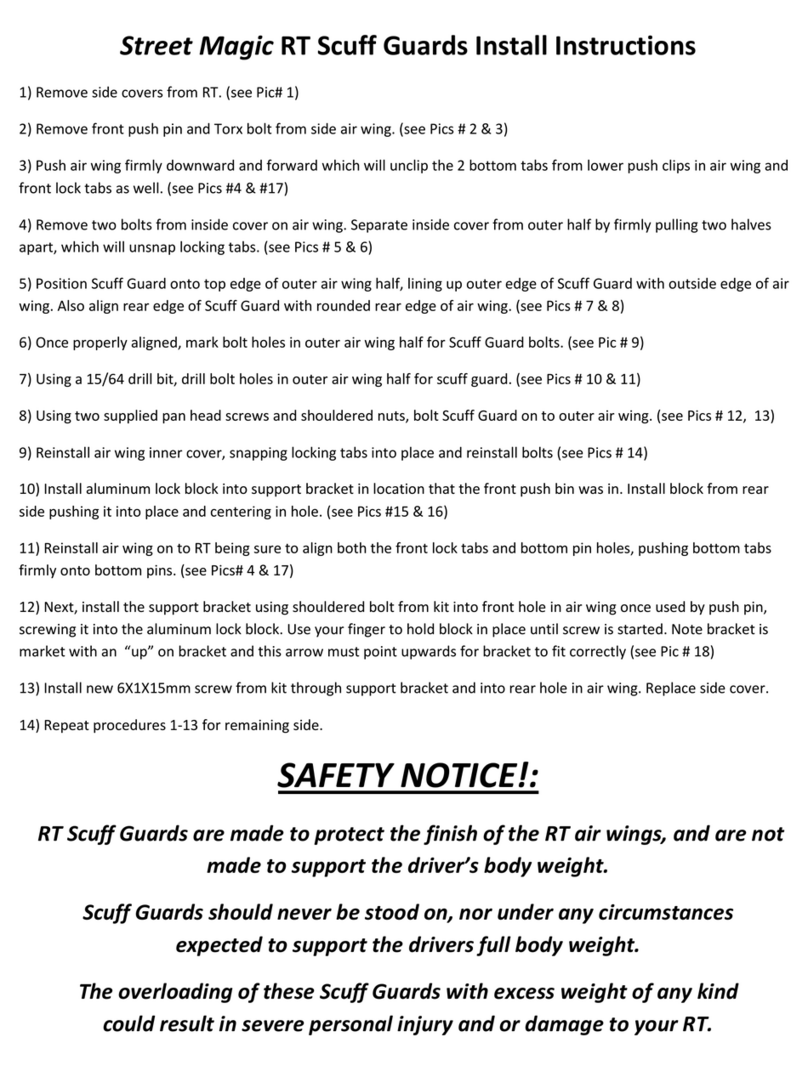
Custom Dynamics
Custom Dynamics Street Magic RT Scuff Guard Install instructions
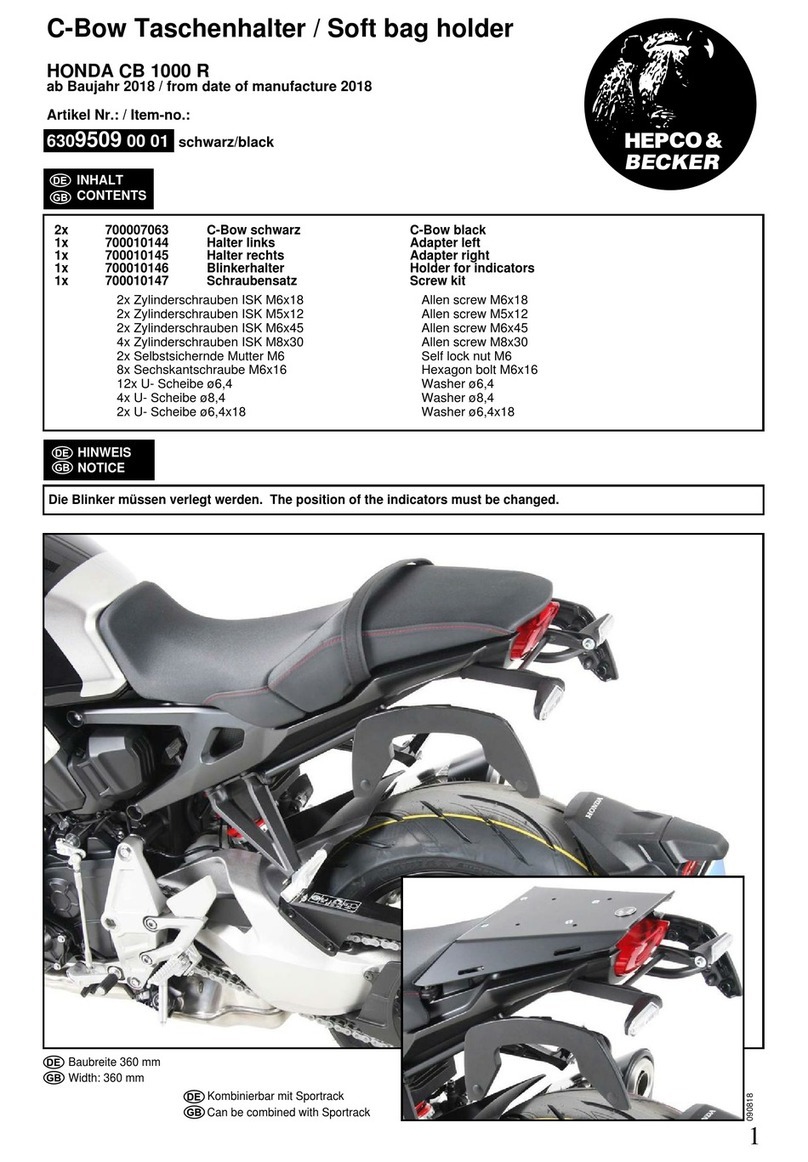
hepco & becker
hepco & becker 6309509 00 01 manual
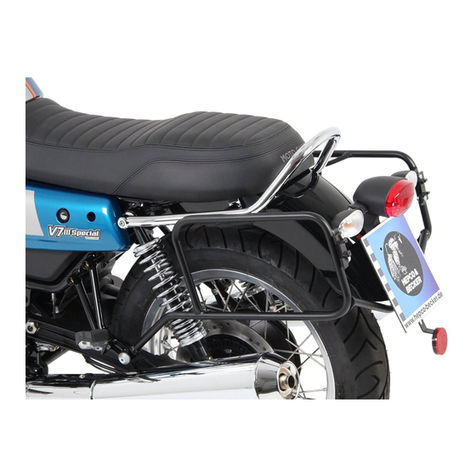
hepco & becker
hepco & becker 653550 00 01 manual
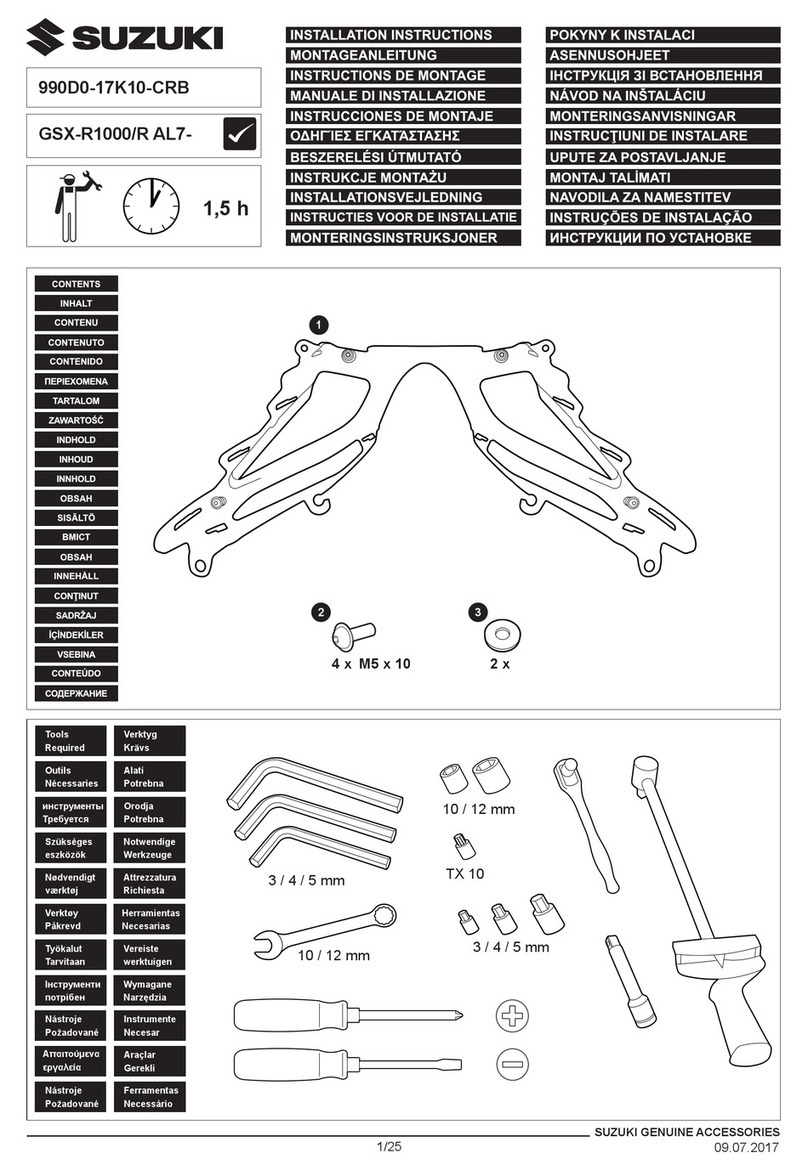
Suzuki
Suzuki 990D0-17K10-CRB installation instructions
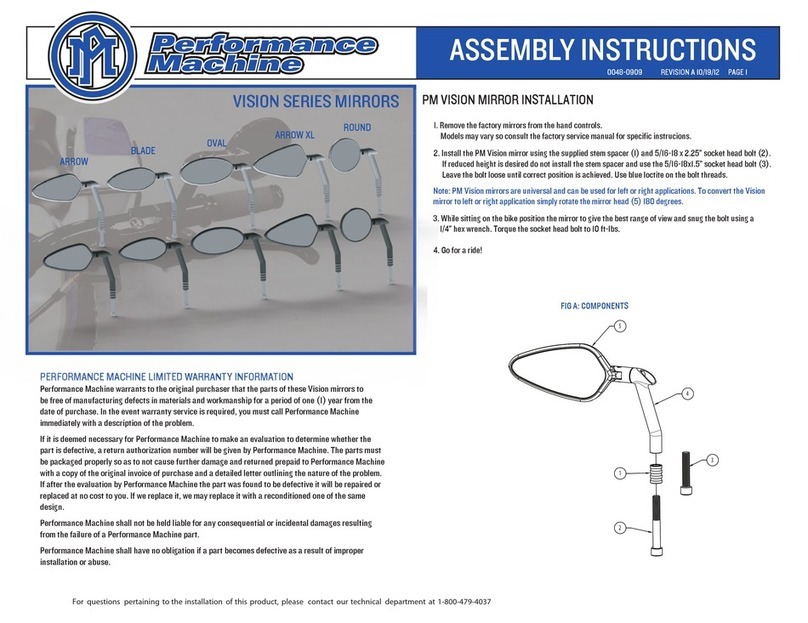
Performance Machine
Performance Machine Vision Series Assembly instructions

LAZER
LAZER X8 user guide
